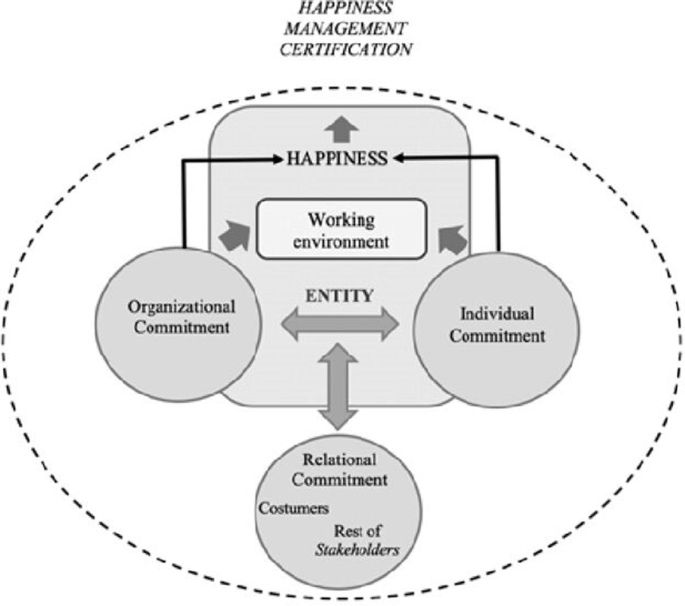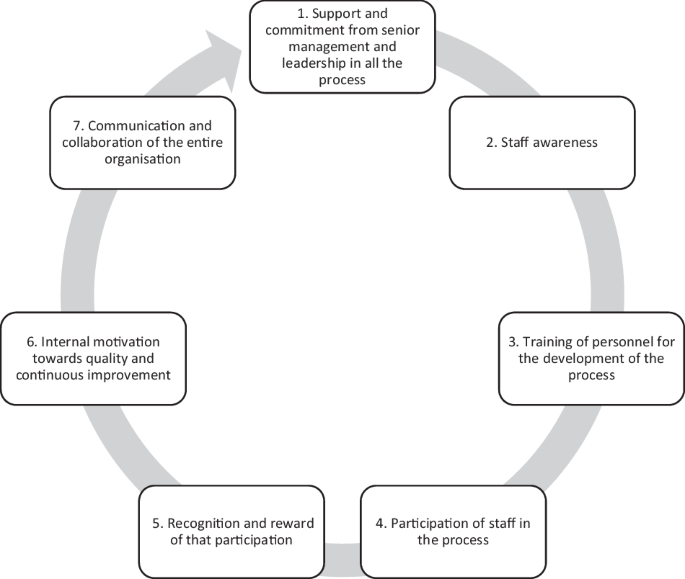Transforming happiness management in Spanish SMEs: the role of consultants

The health and well-being of workers have been of growing interest in the scientific literature and among practitioners due to the benefits it brings to companies and their workers. The International Labor Organization (ILO 2014) already emphasized that companies should promote and maintain the highest degree of physical, mental, and social well-being of employees in all jobs; prevent any damage to their health; protect them in their employment against risks resulting from agents harmful to their health; and place and offer them employment appropriate to their physiological and psychological aptitudes; in short, adapt work to people and each person to their activity.
Moreover, in recent years, happiness management has emerged as a step-in companies’ philosophy to care for their employees. This concern for employees’ happiness and mental health has increased not only in the COVID-19 era but also in the post-COVID-19 era. This is because employees are suffering very negative consequences in their mental health and well-being (Yıldırım et al. 2021), and these consequences are especially detrimental to companies.
Happiness management emphasizes creating workplace conditions that foster employee satisfaction and well-being. Large companies often implement advanced strategies backed by significant resources, such as comprehensive Human Resources (HR) tools, coaching programs, and digital platforms for employee engagement. For instance, digital tools incorporating gamification and coaching features enable large firms to effectively promote and monitor workforce happiness in Industry 4.0 environments (Salvadorinho and Teixeira 2023; Núñez-Sánchez et al. 2024). These systems ensure structured and measurable approaches to enhancing employee well-being.
In contrast, SMEs face limitations such as financial constraints and smaller HR departments, yet they often excel in fostering a personal, human-centric culture. Even without explicit strategies, SMEs achieve positive outcomes through informal practices, such as recognizing employees’ contributions and building strong interpersonal relationships. Research indicates that SMEs benefit from increased employee motivation, productivity, and stronger customer relations despite the absence of formal happiness management frameworks (Barbosa et al. 2023).
Ultimately, while large firms focus on systemic and resource-heavy approaches to happiness management, SMEs can leverage the flexibility and close-knit environments to nurture employee happiness. By implementing tailored formal or informal strategies, large companies and SMEs can significantly improve workplace satisfaction and organizational success (Firmansyah and Wahdiniwaty 2023).
Happiness management has gained traction globally, especially within the SME context, as organizations strive to foster employee well-being while enhancing productivity and innovation. A recent study in India highlights that happiness management frameworks, originally developed in Spain, can be successfully applied in culturally similar collectivist economies. Indian SMEs are tapping into workplace happiness as a competitive advantage, emphasizing the importance of cultural adaptability and leadership in implementing such strategies effectively (Human Resource Management International Digest 2020). Similarly, Ravina-Ripoll et al. (2021) explored happiness management in Spanish SMEs, revealing that aligning brand orientation with happiness initiatives can enhance organizational sustainability and employee satisfaction (Ravina-Ripoll et al. 2021). However, despite progress, Spanish SMEs often lack the formalized frameworks required to implement and measure these strategies compared to larger enterprises.
Globally, organizational happiness has also been linked to the United Nations’ Sustainable Development Goals (SDGs), emphasizing well-being as a driver of corporate success. Research across Chile, Colombia, and Spain reveals that fostering organizational happiness contributes to sustainable workplaces, particularly in higher education institutions, through dimensions such as engagement, recognition, and positive relationships (Munar et al. 2020). In contrast, SMEs in Spain face challenges in fully integrating happiness management with broader sustainability goals, often due to limited resources and expertise. Additionally, López-Ruiz et al. (2021) examined the relationship between happiness and quality of life in Spain, highlighting the critical role of job stability and organizational culture in influencing worker happiness, particularly in the aftermath of the COVID-19 pandemic (López-Ruiz et al. 2021).
The well-being of workers in organizations
The health and well-being of employees are the result of a balance of physical, mental, and social components, as well as health habits related to good physical condition, energy, and vitality (Basińska-Zych and Springer 2021). The workforce’s health is essential to a company’s long-term success, and workers’ health is a strategic element in managing human resources (Sparling 2010). The well-being of employees is a critical factor in achieving the organization’s success (Page and Vella-Brodrick 2009).
Companies want their employees to be in good health as it has been shown that they are more productive and have lower absenteeism (Mujtaba and Cavico 2013). It is in the interest of any company to have a healthy workforce, as it helps their employees’ work engagement and improves their productivity, having the potential to improve the company’s profitability and helping to achieve other organizational goals (Kent et al. 2016).
In recent times, there has been a worldwide pandemic that has had devastating consequences for employee health. The worsening of their health has been very considerable, with one-third of workers in Spain stating that their general health has worsened during the pandemic (Salas-Nicás et al. 2021). It is important to note that this pandemic and the teleworking situation is having negative consequences not only for the physical but also for the mental health of employees (Núñez-Sánchez et al. 2021).
Likewise, the expansion of teleworking derived from the pandemic has also caused reductions in the physical activity of workers that can influence the effectiveness of work and a worsening of their well-being (López-Bueno et al. 2020); this is very worrying for companies. Well-being is also related to happiness, as many researchers refer to happiness as subjective well-being (Zelenski et al. 2008). In this sense, it can be established that happiness emerges strongly and is closely related to well-being. The basis of happiness is found in inner well-being and mental health (Diener et al. 2010), which, as we have seen, has been affected by the pandemic. Therefore, in the post-pandemic and teleworking era, it is more than necessary and advisable for companies to be concerned about the health and well-being of their employees as it will result in multiple benefits for the company.
Happiness management
The scientific community’s interest in the management of happiness in organizations has been growing over the years. However, in Spain, it is a relatively new concept (Jambrino-Maldonado et al. 2022). Organizational happiness appears as one of the most representative elements of a new trend in organizations, in which a growing concern of managers for the conditions of employees is perceived (Mendoza-Ocasal et al. 2021).
The management of employee happiness has recently become a competitive strategy for companies due to the multiple benefits it brings inside and outside the organization. Thus, happiness at work is an important issue for companies, with worker happiness being a determining factor of their short- and long-term efficiency. Among the measures of happiness at work, there is a diversity of constructs, the most widely used of which is job satisfaction, with happy workers having a high level of job satisfaction (Frey 2020).
The recent scientific literature has shown that happy workers are more productive, resourceful, and loyal to their employers. Yet the personnel policies observed in companies do not seem to consider the benefits of having happy employees (Ravina-Ripoll et al. 2021). These happy workers also present a greater predisposition to improve their professional qualifications and work in a team and as a team, all with a high level of job satisfaction (Frey 2020). Workers’ happiness, joy, satisfaction, and motivation are not only consequences of management that achieves positive results but precisely the path toward them (Foncubierta-Rodríguez and Sánchez-Montero 2019).
Considering the pandemic and post-pandemic effects on the mental health of workers and taking into account the time we spend at work, workers’ happiness emerges as a fundamental pillar to achieving the personal well-being of our employees. This factor is particularly relevant in the post-COVID-19 era.
Given the above, it is unsurprising that large multinationals act to increase their workers’ motivation and psychosocial well-being (Ravina-Ripoll et al. 2021). However, this does not occur in SMEs, probably due to their lack of financial, material, and human resources to perform these actions. Among the necessary human resources to carry out this happiness management, we find the figure of the Chief Happiness Officer. The philosophy of happiness management through the Chief Happiness Officer and transformational leadership positively influences workers’ subjective well-being (Hassani 2017).
Organizations must first know how to foster happiness, and after this, they will obtain all the positive outcomes associated with happiness at work (Bastos and Barsade 2020). Considering the benefits of happiness management and that it is a strategy which, according to various authors, is limited to being applied by large multinationals with abundant resources, it could be inferred the opportunity within the human resources consulting business to offer these services to SMEs. This would include advice and accompaniment for obtaining a formal certificate to ensure a proper implementation given the various problems we encounter.
Happiness management certification model
An exhaustive review of the literature and practice in this field has been carried out to find a happiness management certification model that could help companies, with or without the advice of a consulting firm. Being a relatively new field in Spain, finding a certificate in the literature has not been easy. Throughout this search concerning existing business certifications, it is emphasized that this process should not be a mere bureaucratic procedure that helps the company’s image (Martínez-Costa et al. 2008) but rather a means, a tool to achieve, in our case, effective happiness management.
Moreover, this tool should become part of the innovative strategy for human resources management, which helps to achieve the happiness of workers in the post-COVID-19 era from the perspective of happiness management (Kamel et al. 2017). For all these reasons exposed, Ravina-Ripoll et al. (2023), in the absence of a certificate of this type, concluded the convenience and need to start planning a quality seal that measures and guarantees a positive climate in organizations, called “Certification of Happiness Management” (CHM). This instrument can become an attractive and innovative axis for managing human resources in the comprehensive search for the corporate happiness of workers in the post-COVID-19 era.
This is the certification model chosen by the authors to be applied in SMEs through consulting. Figure 1 shows the model and the underlying philosophy of CHM.

Generating a model of CHM applying happiness management.
This model highlights the importance of the organization’s commitment and the internal and external customers and the rest of the stakeholders, all in a work environment that favors achieving the objective of Happiness of all the system components. The CHM is acquired as the culmination of the process.
Previously, it should be emphasized that it is essential for the whole process to be successful and that behind it all, there is a valid philosophy, led by the leaders of the company, and not just the Human Resources department, to place the worker at the center as the pillar of happiness management, and for this, we will use the process of implementing the certification as a means to achieve it and not as an end in itself. There are also several key factors for success in obtaining a certificate of this type, which can be seen in Fig. 2.

Series of factors needed to show the true philosophy pursued by the entity to achieve the certificate.
Once the happiness philosophy has been implemented throughout the company, as well as the processes leading to obtaining the certificate, we can affirm, following Ravina-Ripoll et al. (2023), that these organizations are characterized by having achieved strengths that will be pillars for the organization: listening to the emotions of their internal customers, and possessing a transformational leadership style that focuses on innovation, training, and corporate welfare. These pillars on which this happiness management is based will strengthen the company, making it more efficient to take advantage of the environment’s opportunities and face its threats, such as those generated by the current pandemic, with greater success.
Before implementing the Certification model, the researchers, who are also consultants in corporate well-being and happiness, have decided to evaluate the process, components, and phases with those responsible for Happiness in companies that, in one way or another, have been applying happiness policies to assess it from a qualitative point of view.
For all the above analyzed and commented on, the main objective of this research is to determine the characteristics that a Happiness Management Certificate in Spain should have. The intention is to standardize the process, emphasizing SMEs as a market opportunity for the consulting sector since these companies have smaller structures and fewer resources than large companies.
According to the latest data from the National Institute of Statistics (INE, 2021), SMEs comprise 97% of companies in Spain, a percentage that marks the predominance of micro-enterprises, which constituted 94% of private sector companies in January 2020, with a total of 3,417,000 companies. Corresponding to June 2022, there are 2,935,000 SMEs in Spain, counting all categories. However, they still comprise almost the totality of the business fabric, reserving a spectrum of 0.17% for large companies.
The specific objective is to evaluate the level of happiness of the working class in Spain, based on research conducted by the CIS in 2021, and to compare it with that of the non-working class.
link





